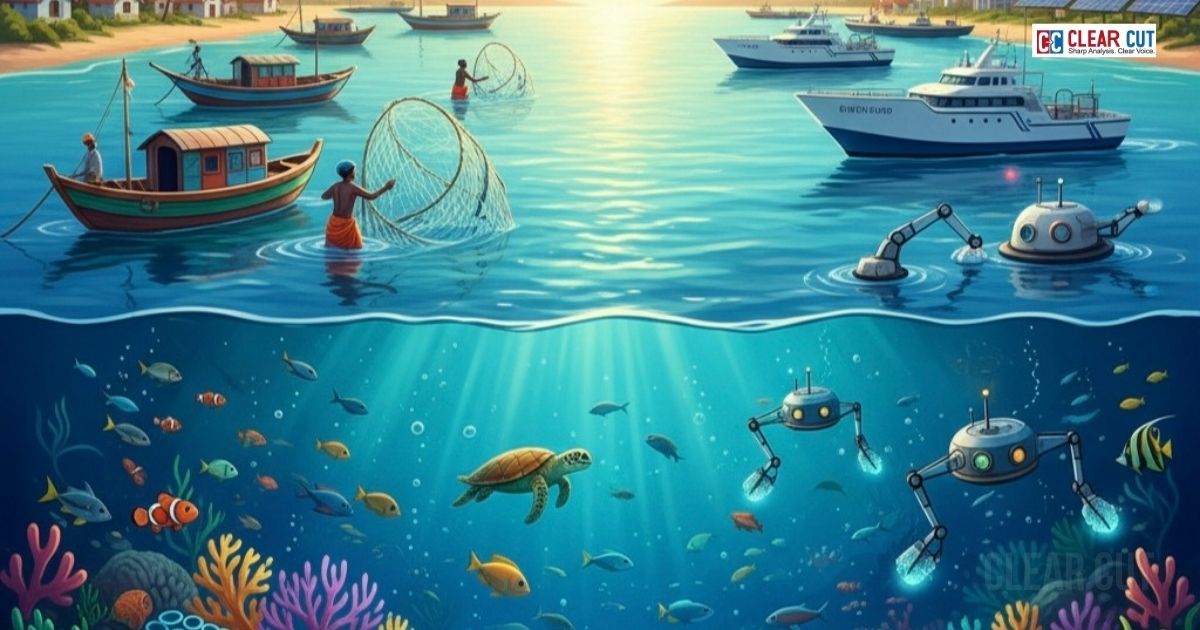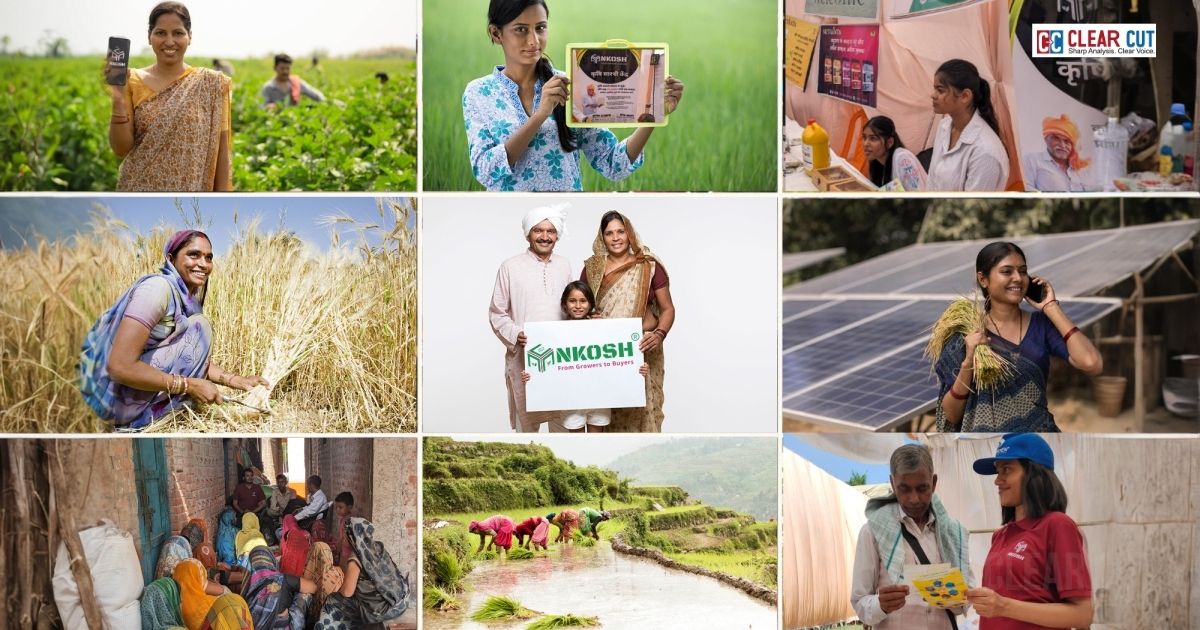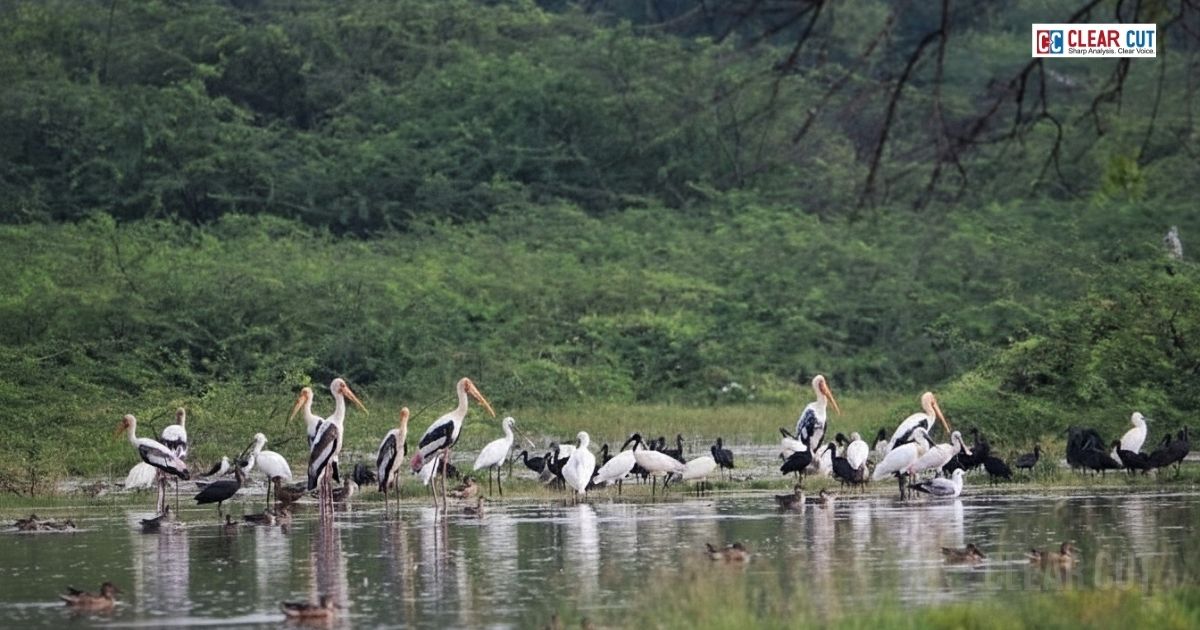Photo Credit: Antara Mrinal
Clear Cut Livelihood Desk
New Delhi, UPDATED: Oct 28, 2025 11:36 IST
Written By: Antara Mrinal
The ocean is neither boundless nor tranquil; for India as a country with 7,500+ km coastline and a 2.02 million km² Exclusive Economic Zone, it is at once a source of food, livelihoods and minerals, and a front line for meeting the Sustainable Development Goals. Linking SDG 14 (Life Below Water) to India’s policy options makes clear that protecting marine ecosystems is an economic and social necessity, not just a conservation exercise.
Where India Stands on SDG 14
Progress on SDG 14 is variable. National scorecards, such as the SDG India Index, suggest that “Life Below Water” is one of the most difficult goals for many states, with barriers to managing coastal areas, controlling pollution, and protecting marine areas. Internationally, UN monitoring suggests that healthy marine systems are under threat from pollution, overfishing and climate change, and that these trends would continue to undermine fisheries, coastal resilience and blue-economy opportunities unless we address them (NITI AAYOG).
Fisheries and Food Security: A Balancing Act
Fisheries play a crucial role for SDG 14, and India’s food and economic security. India is one of the largest fish producers globally; estimates for national production have increased in recent years; provisional estimates for 2022-23 production are around 174 lakh tonnes (17.4 million tonnes) and estimated for marine fish landings along the mainland 3.53 million tonnes in 2023, a small increase over 2022. Fisheries directly contribute to livelihoods for millions of fishers and indirectly to millions more involved in processing, trade, and services. The fisheries sector contributes about 1% of GDP (gross domestic product) and about 5% of agricultural GDP. Sustainable fisheries are important for nutrition, export earnings, and rural incomes; realizing that potential requires moving from short-term harvesting to science-based management to maintain catch within sustainable limits (Press Information Bureau).
Marine Pollution: Plastics, Nutrients, and Urban Runoff
Pollution is one of the most visible ways humans are harming the sea. Plastic debris is prevalent in shoreline surveys and growing research on the Indian Ocean shows that states along the rim of the ocean contribute a significant portion of mismanaged plastics that eventually enter coastal waters. Scientific reports and reports for specific geographic regions warn that plastics, and the microplastics they break down into, are found throughout coastal sediments, on beaches, and in marine and aquatic food webs, which impact wildlife and human health. Much of this load comes from riverine transport, poor urban waste management and uncontrolled coastal industries, thus meeting SDG 14 goals requires integrated waste management and circular-economy interventions.
India’s Coastal Policies and Governance
There are many tools in India’s coastal policy architecture for coastal zone governance including regulations for coastal zones, regulations for waste management at municipal levels, fisheries management, and flagship schemes for port and coastal infrastructure (Sagarmala) and a freshwater mission that engages coastal freshwater needs (Jal Jeevan Mission). However implementation is uneven: many towns still discharge untreated sewage and industries continue to discharge effluents into the sea, mangrove protection is patchy, and monitoring abilities are highly variable from state to state. Immediate policy levers that would be beneficial for both environmental and social returns are: bolster the enforcement of Coastal Regulation Zone regulations; expand marine protected areas; and invest in wastewater treatment. The SDG agenda can serve as a unifying structure for these policy considerations: healthier coastal waters mean better fish stocks, better beaches, and more climate resilience for communities along the coast (NITI AAYOG).
Deep Ocean Mission: Opportunity and Caution
In 2021, the Government of India, through the Ministry of Earth Sciences, announced India’s Deep Ocean Mission (referenced in the Mission with name ‘Samudrayaan’) to research and develop technologies for exploration, seabed mapping and developing sustained use of resources from the deep ocean, including polymetallic nodules. There has been scaling investment since inception (e.g. hundreds of crores a year in budget lines and upward trending expenditure as the program matures), and there are lofty ambitions: a moored submersible and an unmanned submersible in 2023, seabed observatories, and a plan to develop capacity to assess resources. While deep-sea research has the potential to enhance science, monitor biodiversity, and contribute to a blue economy, it raises questions regarding the environmental sustainability of extracting resources. The deep can be slow to recover from disturbance, and extraction activities have the potential to irreparably alter unknown ecosystems and disrupt the goals of Sustainable Development Goal 14 unless undertaken with adequate environmental assessments, precautionary standards, and international best practices. The policy challenge is to explicitly connect the technological advances of deep ocean exploration with strong conservation values, so that the economic benefits do not come at the cost of ecological loss, which may be irreversible.
Pathways to Reconcile Growth and Conservation
Three concrete steps can help align India’s blue-growth aspirations with SDG 14. First, accelerate marine pollution management: invest in waste treatment for coastal waters, prohibit or retrofit sources of single-use plastics, and beef up river cleanup to cut off plastics at the source. Second, implement fisheries management: grow scientific stock assessments, enforce catch limits where appropriate, and create support for fishers to maintain sustainable livelihoods and enhance access to the value chain as an outcome of the conservation partnership. Third, create transparency and precautionary exploration: outputs from Deep Ocean Mission should be open, subject to independent environmental review and encompassed within an ocean use plan that specifies aspects concerning no take zones and critical habitat protection. Evidence-based policy development and community engagement are the adhesive that will help hold these components together (World Bank).
An Ocean Focused Approach to SDG
India’s oceans are an economic frontier and an environmental reflection. Achieving SDG 14 will require interconnected and cross-ministerial states with coherent policies, science that underpins management and investments to help prevent pollution, while enabling livelihoods. Deep Ocean Mission demonstrates India’s technical aspirations, fisheries and pollution data demonstrate the urgency. If India aligns scientific exploration, coastal governance and community welfare, the Blue Economy can become a cornerstone of the SDG story, a story where life below water supports life above it.




